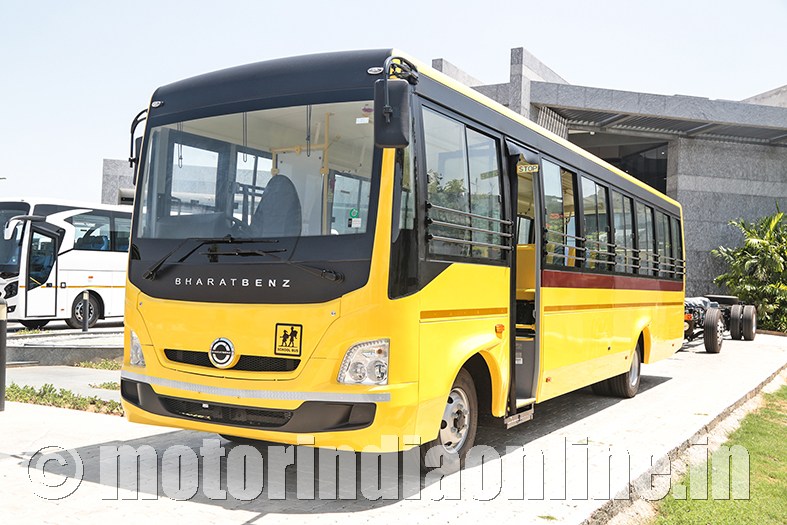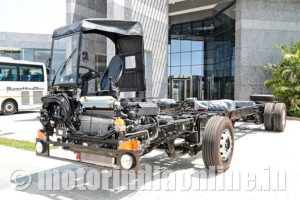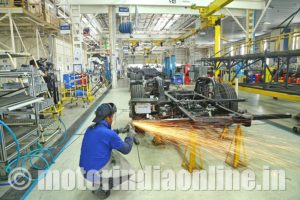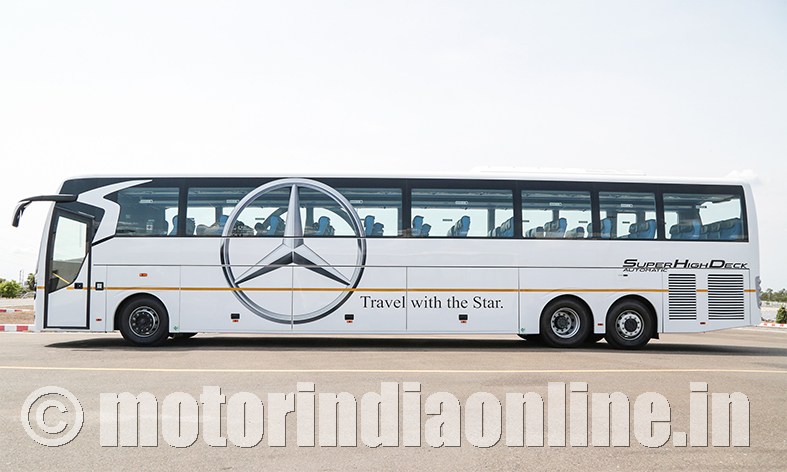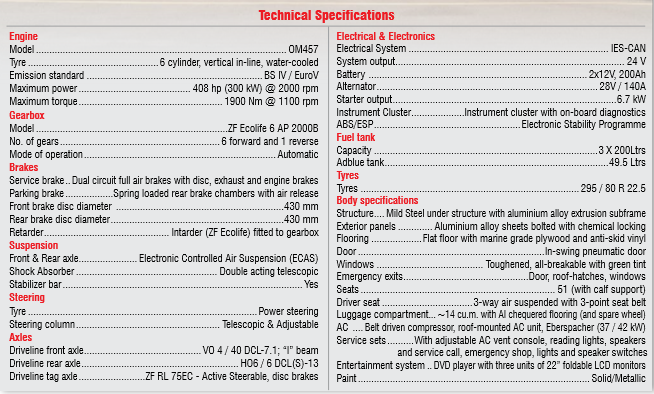Launches new 2441 luxury coach, hopes to maintain robust growth
Daimler Buses India, a unit of the €4.4 bn Daimler Buses under the umbrella of Daimler India Commercial Vehicles (DICV), is stepping up its presence in the Indian bus market after a successful 2017. The company has also upgraded its flagship product with the introduction of the Mercedes-Benz 2441 Super High Deck (SHD) 15 m long-distance coach that replaces its 2436 SHD coach, 75 units of which were sold during the year it was available for sale.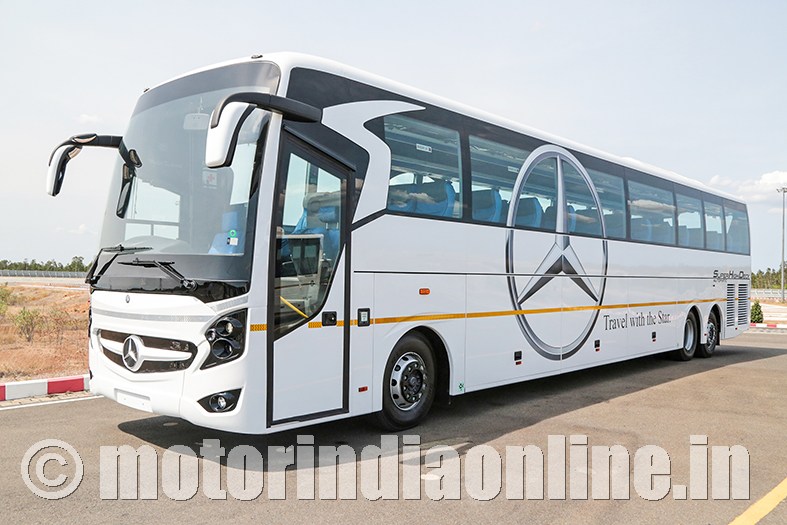
Back in mid-2014, Daimler had laid the foundation stone for its new bus plant at Oragadam near Chennai. A year later, the plant was inaugurated along with a showcase of the full range of BharatBenz and Mercedes-Benz buses. The first batch of buses was soon rolled out with deliveries commencing towards the end of 2015.
Market pull
Making steady and sustainable progress, Daimler Buses India has sold a total of 906 units in 2017, an 80 per cent jump from the 501 units it had sold in 2016. Though the numbers appear a lot smaller than the country’s annual bus market size – estimated to be around 40,000 units in FY18 – the figures reflect growing acceptance for BharatBenz buses in the 9 and 16 ton segments. The 80 per cent jump seems all the more impressive given the overall domestic bus market saw a significant drop in volume during the year.
The Indian bus market size was at around 20,000 units in 2002, growing at a healthy average rate of close to nine per cent YoY, doubling to around 40,000 units by 2017. Long-term projections indicate the market to reach somewhere between 50,000 and 60,000 units annually over the next few years. This is what makes the Indian bus market a very interesting one for Daimler, more so since most other global markets are either declining, saturated and hence flat or growing at a very slow pace.
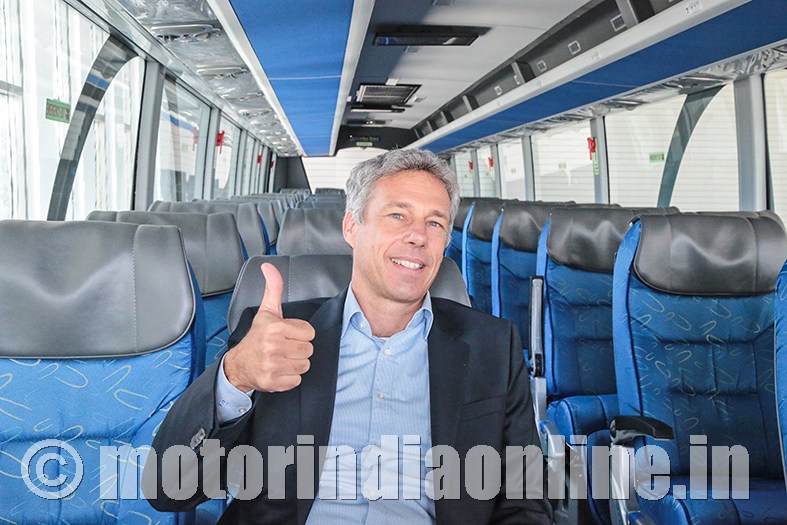
And it’s not just the volumes that interests Daimler but also the kind of transformation and evolution that the future holds for the Indian bus market. Addressing the media during the launch of the 2441 SHD coach, Mr. Thomas Fricke, Managing Director, Daimler Buses India, shared: “The Indian bus market is expected to shift from low-cost mass-market products to more modern, semi-premium and premium segments. We will have more fully-built buses from OEMs and buses with bodies built by qualified bus body builders. How fast this trend will materialize depends on how stringent regulations such as the bus body code or the emission norms will be implemented. A good example is the introduction of the advanced AIS 140 regulation which if mandated will certainly help the market evolve. And as the Indian bus market evolves, we at Daimler Buses lead the shift with products that meet global standards of performance and safety. With superior technology, we aim to be the benchmark in terms of total cost of ownership, safety and comfort.”
Right product mix
Daimler Buses India’s product portfolio comprises front-engine BharatBenz 9-tonne buses in the school, staff and tourist bus sub-segments, rear-engine Mercedes-Benz 15 m multi-axle luxury coach and bus chassis for the 9, 16 and 24-tonne segments. The company has put off the introduction of the BharatBenz 16-tonne intercity coach that was showcased last year and plans to bring it back in a more advanced version after the introduction of BS-VI by 2020.
In addition to fully-built buses, Daimler also exports bus chassis for the 9 and 16-tonne segments to markets in Africa, Latin America, the Middle East, and South East Asia. Apart from growing domestic sales, the company shipped out around 500 chassis to the targeted overseas markets in 2017. While its current share of sales between domestic and export markets stands at 70 per cent and 30 per cent respectively, its aims to achieve a long-term sales ratio of 2:1 in favor of the domestic market. In terms of plant capacity, the German firm is geared up for the future, with a production line capable of rolling out 1,500 fully-built buses and an additional 3,000 chassis annually.
New 2441 SHD coach
With the presentation of the new-generation of its flagship product, the Mercedes-Benz 2441 SHD automatic coach, the company has raised the bar further in the top-end segment. The coach, the longest in the country at 15 m, comes with a 410 hp engine (a 50 hp upgrade from its predecessor 2436) and boasts of a fully-automatic transmission that provides for further improved fuel efficiency, a smoother and quieter ride for passengers and a more peaceful and comfortable drive experience for the person at the wheels.
Apart from the higher engine power and fully-automatic transmission, the 2441 also has a number of other upgrades compared to the 2436 – new dashboard, all-new driver area, no gear shift lever, materials upgraded in the service and luggage compartment areas, layout improvements such as new position for the battery pack for better serviceability and easier maintenance.
The 2441 coach offers a seating capacity of up to 59 pushback seats with calf support and 14 cu. m. of luggage space. With an active steerable tag axle, it features a low turning circle diameter to effortlessly navigate sharp turns and bends. The coach comes equipped with advanced braking systems such as ABS, ESP as standard features and other electronic support functions and has a strategically-positioned fuel tank for added safety.
The vehicle’s unique aluminique body makes it the lightest vehicle in its class which in turn contributes to better fuel efficiency. It may be recollected that Daimler had chosen Irish bus body builder Wrightbus as its partner while setting up the Oragadam facility. However, the OEM had subsequently taken over the bus body building operations from Wrightbus and currently does the body building on its own.
Sharing details on how the company ensures the quality of bus bodies built by third-party body builders on the range of chassis it sells, Mr. Fricke replied: “We have a body builder process which consists of releasing the body builder in general, releasing the technical concept of the body builder and then releasing the final vehicle – this forms the basis of the warranty claims and service support. We currently work with around 25 body builders, mostly the larger ones, who are located in different parts of the country.”
According to Daimler, the premium luxury coach market in India accounts for close to 600 units annually. With the new 2441, it is targeting a share of around 30 per cent in the space. In a head start, the company has already handed over the first batch of six vehicles of the new 2441 to Parveen Travels and is currently ramping up production to cater to other orders in hand.
BS-VI better than electric
When asked about Daimler’s plans for the city bus segment, hybrid & electric mobility in India, the MD replied: “We do not plan to enter the city bus segment for now. We have activities in the electric area in the European markets but we do not plan to do electric buses in India since we think it is not the most efficient way of dealing with improving the air quality. BS-VI is a very efficient way of getting clean air without huge additional costs and huge additional infrastructure investments. A scrapping policy will certainly help and will be a wise move because BS-VI is the most efficient way to get clean air for a rather low cost compared to other solutions.”
For 2018, Daimler Buses India is hoping achieve an 80 to 100 per cent sales growth buoyed by rising demand for its products and better overall market demand for buses and coaches.
